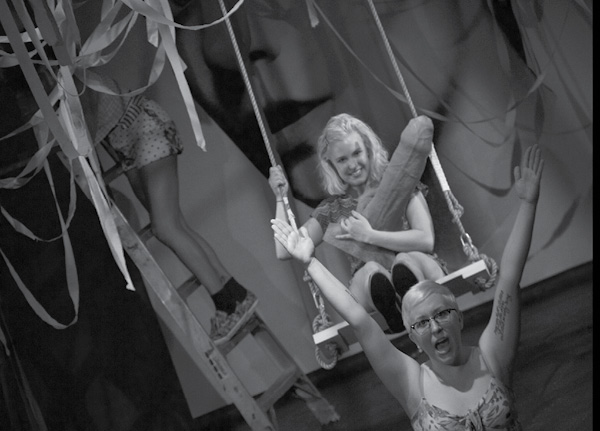
TOO MANY LENAS 3
first performed on June 12, 2014
Ars Nova, New York, NY
performed five times in 2014
CARROLL SIMMONS / JAIME WRIGHT, DAVID BERNSTEIN
Tessa Skara, Sam Corbin, Haley Traub, Elizabeth Trieu, Peter Mills Weiss, Chris Tyler, Mike McGee, Blake Palmer, Stephanie Levin
Brooklyn, NY / Toronto, ON
672214001j672214001a672214001i672214001m672214001e672214001a672214001w672214001r672214001i672214001g672214001h672214001t672214001@672214001g672214001m672214001a672214001i672214001l672214001.672214001c672214001o672214001m672214001 672214001/672214001 672214001t672214001o672214001d672214001a672214001v672214001i672214001d672214001b672214001e672214001r672214001n672214001s672214001t672214001e672214001i672214001n672214001@672214001g672214001m672214001a672214001i672214001l672214001.672214001c672214001o672214001m
carrollsimmons.tumblr.com
TOO MANY LENAS 3
CARROLL SIMMONS / JAIME WRIGHT, DAVID BERNSTEIN
“Too Many Lenas 3” is a performance piece which uses camp, presentational dance and institutional intervention to excavate and problematize notions of artistic success through the deceptive form of theatre. As a collective of writer-performers emerging from an overcrowded education and entering an overcrowded downtown scene, the piece was our coded cri de coeur, cloaked in aesthetic excess, that was designed to directly confront our place in the current moment of performance making.
In the tradition of freeform feminist character study, our code took the form of a well-known figure as surrogate. Our figure, Lena Dunham, was chosen for her public persona; a fictionalized self crafted around the perceived anxieties of her generation. Throughout the piece, her name and a constellation of referential paraphernalia are obsessively invoked, leaving a rubble of language and character piled up sculpturally by the play’s end. Divorced from context, these shards of meaning can only be attributed back to the attitudes of the performers themselves.
The narrative imagines a coven of Lena Dunhams living together, enacting the mundane rituals of their daily life through extremes of self-dramatization. The Lenas play make-believe, they prepare for job interviews, they soliloquize. Using found and original texts, we fashioned a mashup that queered expectations of structural cohesion and the separation of character and creator. It was a theatrical culture jam responding to the absurdity of the earnest creative impulse and the pipe dream of economic stability.
Built into the piece’s structure was a false ending that gave way to an incongruous, site-specific appendix. An unidentified speaker enters unexplained and launches into a digressive monologue, jarringly disrupting what was left of the narrative. For each engagement we had, we created a new surreal awards ceremony for this speaker to conduct, supposedly at the behest of the programming institution. Invoking the real names of the institutions’ administration—and in one case, using an actual administrator as an onstage body performing call-and-response choreography—we gave ourselves a vague but triumphant accolade for “winning” the festival into which we had been programmed. Then, we celebrated with a Broadway song-and-dance. We aimed to turn our attention to the framework we were being presented in, and the problematic hierarchies within it. However, in mocking ourselves in equal measure, our fashionably-meta deconstruction refused the easy catharsis of moral clarity and succumbed to the temptation of unapologetic spectacle. It is still a show after all.